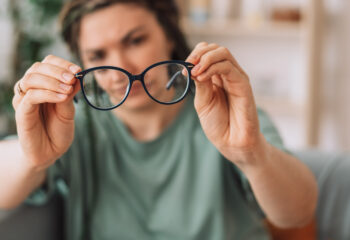Living with vision loss does not mean giving up the enjoyment of movies, museums, theater, or TV. There has never been a better time for access and inclusion in art and entertainment, for everyone. You just need to know it’s there for the asking.
It’s all been covered on the pages of OE Patients and we think it’s well worth repeating. Take advantage of these opportunities to elevate your accessibility awareness, and then pass the information along to a friend.
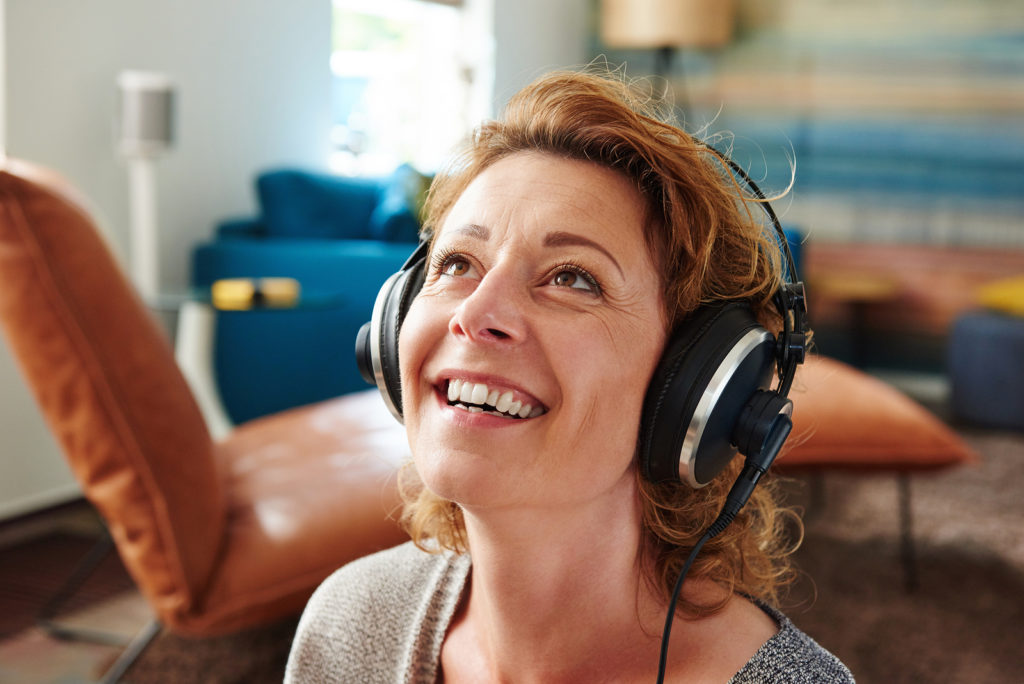
Close up portrait of woman smiling while wearing headphones.
Movies
All movie theaters, in the U.S., now make audio descriptive devices readily available to everyone. The descriptive track, embedded into all widely released movies, automatically syncs with the film and describes the details you may have otherwise missed. The descriptive narration is slipped into the quiet places of the film, so it does not interfere with the soundtrack.
More on OE:
Descriptive Audio Brings Back The Detail
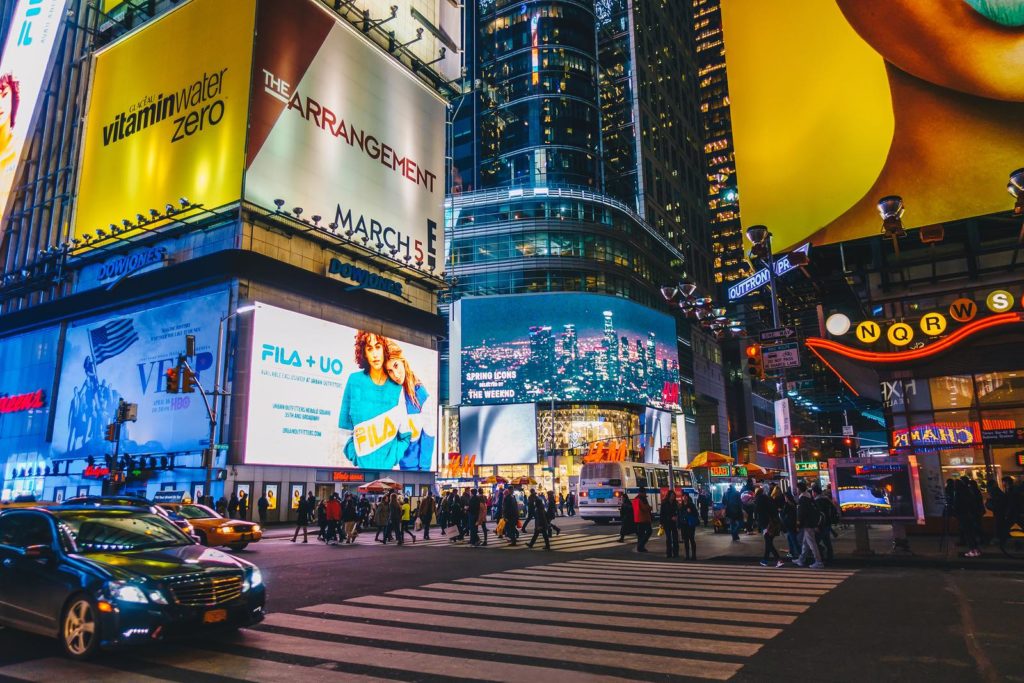
Times Square’s animated colorful LED lights and Broadway theaters in New York City.
Theater
You can count on Broadway for audio description as well. Descriptive devices are available, for the asking, at every live performance beginning 4 weeks from opening night. Borrow a device in the theater’s lobby kiosk, or use the GalaPro app on your own mobile phone. And when purchasing theater tickets, don’t forget to ask about access seating closer to the stage. Staff is always on hand to help you get set to fully enjoy the show. These accommodations may also be available at a theater, off-Broadway, and near you, so go ahead and ask!
Here’s more on theater accessibility:
Inclusivity Takes The Stage On Broadway
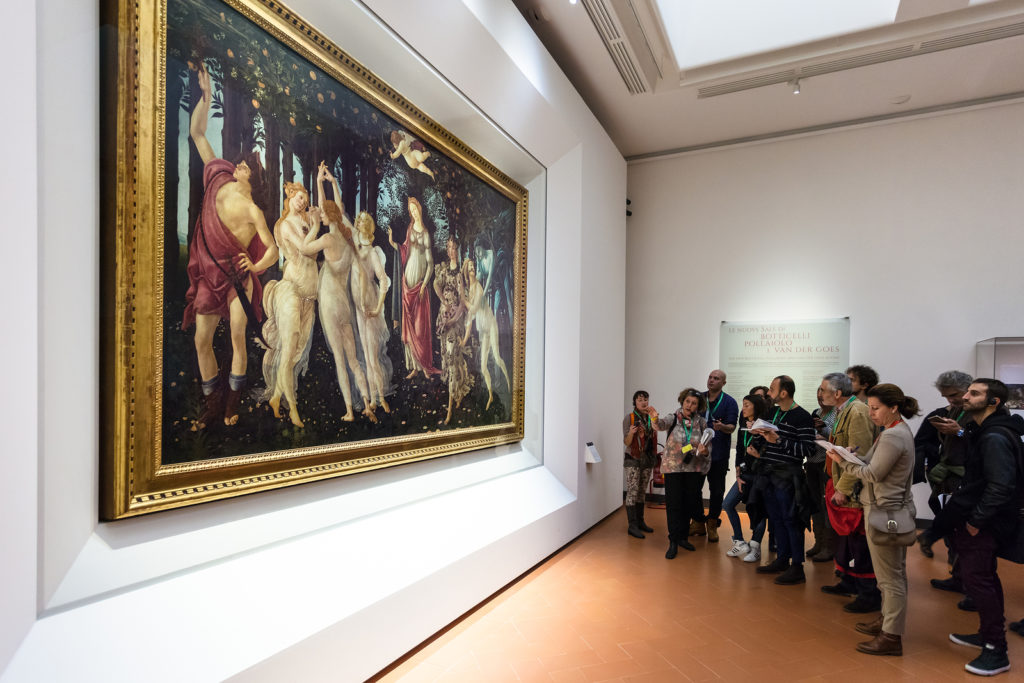
Visitors In Botticelli Hall Of Uffizi Gallery in Florence, Italy.
Museums
Art is more accessible than ever. More often than not, museums offer programs that include touch tours, verbal imaging tours, and audio description, available by appointment, or just for the asking. Explore the opportunities and you’ll discover there are many ways to ‘see’ art.
Learn more here:
Museums Making Art More Accessible
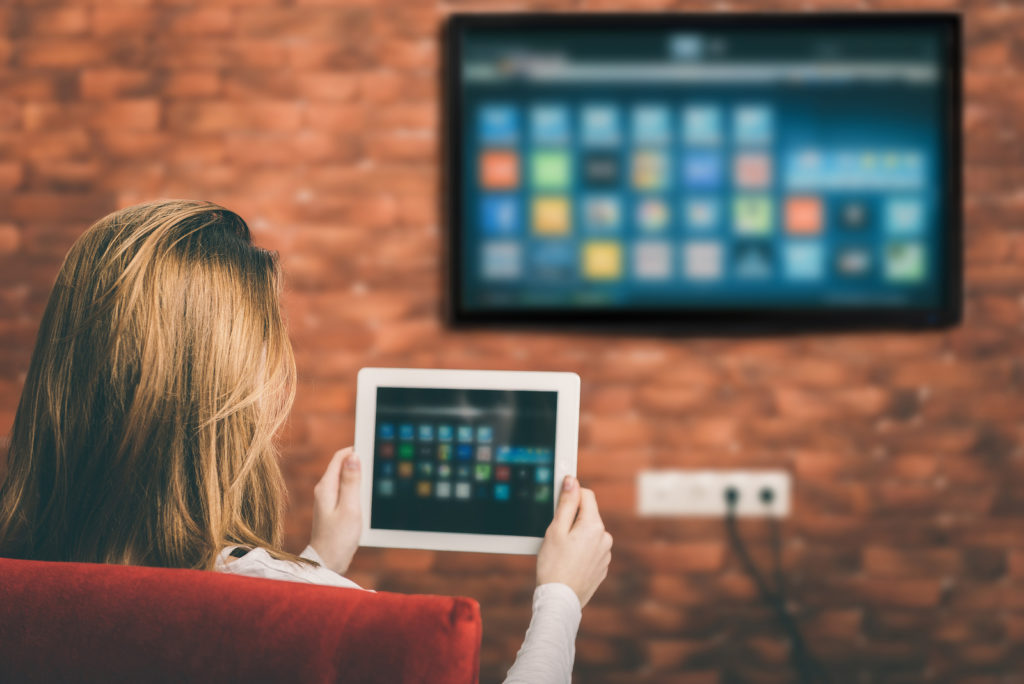
Woman using tablet to help navigate settings on TV.
Television
Viewing and navigating a TV is definitely a challenge with vision loss. Thanks to the 21st Century Communications & Video Accessibility Act, your cable provider must offer a voice-enabled TV guide. This too is available for the asking and at no extra cost. Today many cable providers are adding features, like channel selection, that can be controlled by voice.
Here’s more from OE on TV:
Accessible TV Seminar Highlights
To explore the options available in any of these categories, Google the name of a theater, museum, or cable provider + accessibility.






